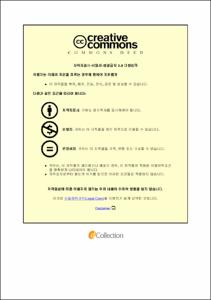일반병동에서 체외순환심폐소생술을 받은 병원내 심정지 환자의 생존 퇴원의 예측 요인
- Abstract
- 체외순환심폐소생술(Extracorporeal cardiopulmonary resuscitation [ECPR])은 병원내 심정지 후 환자의 생존과 신경학적 회복을 돕는 것으로 알려져 있으며 그 사용이 늘어나고 있다. 그러나 ECPR은 훈련된 의료 인력과 고가의 장비를 필요로 하며 체외형 막형 산화기(Extracorporeal oxygen membrane)의 적용과 관련된 부작용을 동반하기 때문에 적절한 대상자에게 선별적으로 적용해야 한다.
본 연구는 일반병동에서 ECPR을 받은 병원내 심정지 환자의 생존 퇴원에 대한 예측 요인을 파악하기 위해 시행되었다. 2015년 1월부터 2021년 12월까지 일 상급종합병원 일반병동에서 발생한 심정지 환자 중 ECPR을 성공적으로 시행 받은 18세 이상 성인 환자를 대상으로 전자의무기록을 후향적으로 검토하여 조사하였다. 수집된 자료는 SPSS WIN (version 27.0) 프로그램을 사용하여 Mann-Whitney U test, Chi-squared test 혹은 Fisher’s Exact test, 단순 선형 회귀분석, 다중 로지스틱 회귀분석을 사용하여 분석하였다.
본 연구를 통해 얻은 결과는 다음과 같다.
1. 연구기간 동안 82명의 환자를 대상으로 ECPR을 시도하였고 70명(85.3%)이 성공적으로 ECPR을 받았다. 이 중 20명(29.0%)이 퇴원 시 생존하였다.
2. 대상자의 연령의 중앙값은 64 (56-73)세였고, 55명(78.6%)이 남성이었다. 심인성 원인으로 심정지가 발생한 환자가 51명(83.0%)이었다.
3. 생존 퇴원군 환자의 연령의 중앙값은 64세로 동일하였다(64 vs 64, χ2 =-0.763, p=.443). 생존 퇴원군과 비생존군의 초기 심정지 리듬이 제세동 필요 리듬이었던 경우(25.0% vs 20.0%, p=.749) 심인성 원인 심정지인 경우(85.0% vs 68.0%, p=.148)는 유의미한 차이가 없었다.
4. 매 1년이 지날 때마다 총 심폐소생술 기간은 3.76분(B=-3.761, p=.003)감소하였고, 저관류기간은 4.90분(B=-4.900, p<.001) 감소하였다.
5. 생존 퇴원을 예측하는 요인으로 심정지 전 확인된 기저질환으로 부정맥이 있었던 경우(Odds ratio [OR] 3.468, 95% Confidence Interval [CI] 1.076-11.179), 총 심폐소생술 기간이 짧은 경우(OR 1.047, 95% CI 1.009-1.085)가 있음을 확인하였다.
이상의 연구 결과에서 일반병동에서 ECPR을 받은 환자의 생존 퇴원에 대한 예측 요인으로 심정지 발생 전 확인된 부정맥과, 짧은 총 심정지 시간을 확인하였다. ECPR의 신속하고 적절한 대상자 선정과 ECPR에 소요되는 시간을 감소시키기 위한 전략이 필요할 것이다.
|The purpose of this study was to find the predictors of survival to hospital discharge in adults resuscitated with ECPR following In-hospital cardiac arrest at general wards. This was a single-tertiary hospital retrospective cohort study of ECPR patients between January 2015 and December 2021. Multivariate logistic regression analysis was used to show independent factors of survival to hospital discharge.
Seventy ECPR patients met inclusion criteria of this study in 811 patients who suffered from in-hospital cardiac arrest in general ward. Twenty patients (28.6%) survived after their hospitalization. The median age was 64 (56-73) years, 78.6% were male and the most common etiology of cardiac arrest was cardiac origin (72.9%). The first documented arrest rhythm of 15 patients (21.4%) was recorded as ventricular fibrillation or pulseless ventricular tachycardia.
The time from cardiac arrest to initiation of ECMO (B= -4.900 min/year, p<.001) and the total cardiac arrest duration (B=-3.761 min/year, p=.003) decreased over the time during the study period. In the multivariate logistic regression, total cardiac arrest time (Odds ratio [OR]=0.955; 95% confidence interval [CI], 0.921-0.991; p=.026) and prior history of cardiac arrhythmia (OR=3.468; 95% CI, 1.076-11.179; p=.037) were independently associated with the survival to hospital discharge.
Prior history of cardiac arrhythmia and total cardiac arrest duration were independent predictors associated with survival to hospital discharge for ECPR at general wards. Therefore, it is recommended to develop strategies to shorten the time to administrate ECPR to improve patient clinical outcomes.
- Issued Date
- 2022
- Awarded Date
- 2022-08
- Type
- dissertation
- Alternative Author(s)
- Oh, Haeyeon
- Affiliation
- 울산대학교
- Department
- 산업대학원 임상전문간호학전공
- Advisor
- 최혜란
- Degree
- Master
- Publisher
- 울산대학교 산업대학원 임상전문간호학전공
- Language
- kor
- Rights
- 울산대학교 논문은 저작권에 의해 보호 받습니다.
- Appears in Collections:
- Industry > Professional Clinical Nursing
- 파일 목록
-
-
Download
 200000630638.pdf
기타 데이터 / 938.98 kB / Adobe PDF
200000630638.pdf
기타 데이터 / 938.98 kB / Adobe PDF
-
Items in Repository are protected by copyright, with all rights reserved, unless otherwise indicated.